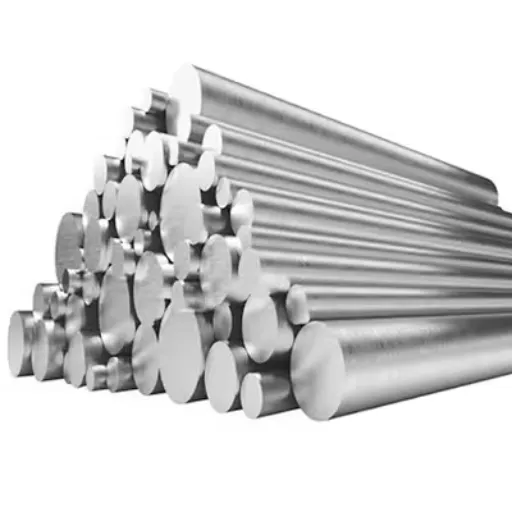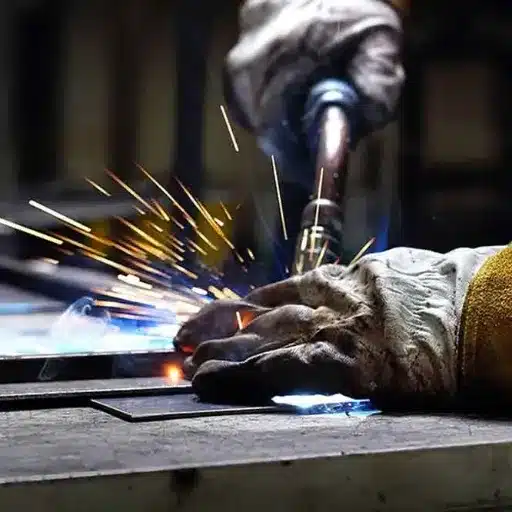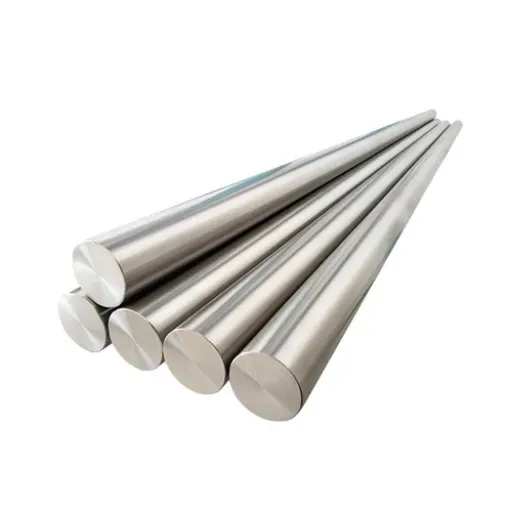In any construction project, procuring the right materials is among the most impactful choices. Steel bars, in particular, are essential to your structure’s strength, durability, and stability. But with so many steel types available in the market, each serving a unique purpose, how do you determine which works best for you? This blog will help you navigate the steel bars selection process so that you can make decisions maximizing utility while ensuring safety. Whether you’re working on a residential build, a commercial structure, or an infrastructure project, this article will equip you with the information to prepare your construction project for success.
What are the Different Types of Steel Bars Used in Construction?
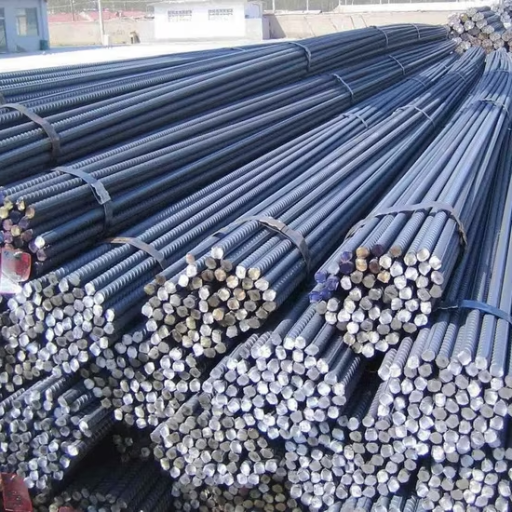
- Mild Steel Bars
These are plain round bars used chiefly for small construction works. Though they can be worked on easily, they have a lower tensile strength than other types of steel.
- Deformed Steel Bars
They have ribs or some form of surface deformation, allowing them to bond better with concrete. They are extensively used in reinforced concrete structures.
- TMT Bars (Thermo Mechanically Treated Bars)
TMT bars are well-defined in modern buildings and infrastructure works due to their increased strength, corrosion resistance, and flexibility. They also tend to withstand dynamic loads, which makes them durable.
- High-Strength Steel Bars
These are meant for large-scale constructions that require high load-bearing capacity. They are ideal for bridges and multi-story buildings.
Each variety of steel bar is used in conjunction with others based on project requirements, ensuring optimal performance and safety when used appropriately.
Commonly Used Steel Bars in Construction
- Mild Steel Bars
Mild steel bars, or MS bars, are used for small-scale construction and are also known as mild steel bars. Although these bars have low tensile strength, ranging between 410 MPa and 450 MPa, they are easily sculpted to meet the requirements of a given task because of their high ductility. They are plain steel, which allows them to be easily cut, filed, welded, and bent. Their typical applications are in small residential buildings and concrete slabs.
- Deformed Steel Bars (TMT Bars)
Modern constructions extensively use Thermomechanically Treated (TMT) bars. TMT bars are known for their high ductility, tensile strength, resistance to seismic forces, and hard exterior with soft interior. Their yield strength (N/mm2) divides TMT bars into several grades, including Fe 415, Fe 500, Fe 550, and Fe 600. For instance, Fe 500 TMT bars have a yield strength of 500 N/mm2, which makes them ideal for heavy infrastructure projects and high-rise structures.
- High-Strength Steel Bars
Using high-strength steel bars is critical for bearing heavy loads when building large structures such as bridges and dams. They are also used in large industrial structures. These bars have been treated with chemicals to enhance their tensile strength, often exceeding 600 MPa, depending on the requirements of a given project. Their ability to bear dynamic loads makes them remarkably useful in sophisticated engineering designs.
- Stainless Steel Rebars
Marine environments are known to corrode most metals, making stainless steel reinforcers a preferred option due to their tremendous resistance to rust. Such chemical processes also make them eco-friendly since fewer pollutants are released. Although more expensive than conventional reinforcers, recent studies have shown increased use of sustainable and eco-friendly steel rebars. Besides being made of stainless steel, these rebars possess excellent tensile strength with an average value of 520 MPa, therefore lasting longer than regular steel.
- Epoxy Coated Rebars
These are standard steel bars coated with epoxy for enhanced resistance to corrosion. Chloroides, marine environments, humid water, and water exposure are all areas where these bars are viable. Bridges, marine structures, and highways use them. From these uses, it is posited that these coated bars can mitigate long-term maintenance expenses and augment the civil structure’s life expectancy.
Recent developments in the steel sector have enhanced the strength and environmental efficiency of steel bars. Steel bars are selected based on required loads, exposure to environmental elements, and budget constraints while ensuring safe and durable construction.
Characteristics of Deformed Steel Bars
With ribs and deformations on their surface, deformed steel bars are well known to possess high tensile strength and outstanding concrete bonding capabilities. These bars are particularly useful in reinforcing structures subjected to heavy loads or even dynamic forces. In addition, resistance to slipping within concrete significantly improves overall construction durability and stability.
Understanding Reinforcement Bar Grades
| Key Point | Details |
|---|---|
| Definition | Steel bars enhance concrete’s tensile strength. |
| Common Grades | 40, 60, 75, 80, 100 (yield strength in ksi). |
| Grade 40 | Yield strength: 40 ksi, light-duty use. |
| Grade 60 | Yield strength: 60 ksi, versatile, common in construction. |
| Grade 75 | Yield strength: 75 ksi, heavy-duty applications. |
| Grade 80 | Yield strength: 80 ksi, high-stress projects. |
| Grade 100 | Yield strength: 100 ksi, ultra-high strength needs. |
| Types of Rebar | Carbon steel, epoxy-coated, stainless steel, galvanized, GFRP. |
| Selection Factors | Structural load, environment, budget, and building codes. |
| Markings | Indicate mill, size, type, and grade. |
| Standards | ASTM A615, A706, A955 (U.S. standards). |
| Applications | Residential, commercial, bridges, high-rises, and marine structures. |
How to Select the Best Steel Bar for Your Construction Needs?
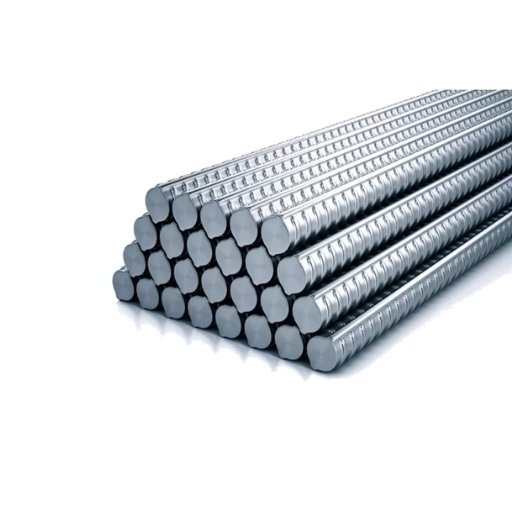
- Know Your Construction Needs
Determine the type of structure being constructed (residential, commercial, or industrial) and analyze the possible load and climatic conditions. This will provide the steel bars with the required strength and durability.
- Select the Right Grade
Depending on a region’s needs, steel bars can be categorized into grades: Fe 415, Fe 500, and Fe 550, which denote the bars’ tensile strength. Choose a grade that overcomes obstacles regarding structural integrity and project safety.
- Look for Test Reports
Check if the bars are certified by an appropriate standards body. For example, steel bars guaranteed by ASTM or BIS will be compliant with industry standards, providing quality assurance.
- Study Corrosion Protection
For structures that are prone to moisture and a very corrosive environment, go for non-corrosive steel bars to greatly improve the project’s life span.
- Think About Efficiency
Quality and budget can be balanced in providing safety for reverse corroded steel which remains unneeded spending.
- Check Supplier’s History
Make sure the brand or dealer of the steel bars purchased is a trustworthy supplier with experience in producing high-quality products.
These are the steps to follow when choosing steel bars to enhance construction measures and extend the life of the project.
Factors in Choosing Steel Bars for Your Project
| Factor | Details |
|---|---|
| Type of Steel | Carbon, stainless, alloy, or TMT steel. |
| Steel Grade | Determines strength and application suitability. |
| Tensile Strength | Ability to withstand loads and deformations. |
| Corrosion Resistance | Essential for coastal or harsh environments. |
| Diameter and Weight | Impacts load capacity and handling ease. |
| Surface Finish | Smooth or deformed for better concrete bonding. |
| Weldability | Important for projects requiring fabrication. |
| Cost and Availability | Balance the budget with project requirements. |
| Brand and Certification | Ensure quality with reputable brands and standards. |
| Environmental Suitability | Match steel properties to project conditions. |
Evaluating Steel Bar Sizes and Lengths
Each project has unique requirements and structures that need tailored approaches, especially when considering the raising and cutting of steel bars – steel bars come in varying lengths and diameters, making them useful for different applications. Provided below are five standard dimensions of steel bars that are use in construction:
- 6mm Diameter Steel Bars
Standard Length: 12 meters
Application: These steel bars are used in soft structures, such as minor residential constructions or as supports within low-stress concrete structures.
- 8mm Diameter Steel Bars
Standard Length: 12 meters
Application: These bars support medium-durability constructions such as beams and columns in residential buildings.
- 10mm Diameter Steel Bars
Standard Length: 12 meters
Application: These bars are used to construct high-excess load structures, such as bridges, large frame beams, and multi-story concrete structures.
- 12mm Diameter Steel Bars
Standard Length: 12 meters
Application: These bars are used for industrial and commercial structures due to their high strength and stability requirements.
- 16mm Diameter Steel Bars
Standard Length: 12 meters
Application: These oversized bars are used for heavy-duty constructions such as walls and peaked multi-storied buildings.
Following these guidelines is helpful for most applications, however consult a structural engineer for the exact specifications.
Assessing Steel Grades for Durability
The specific steel grade requirements should be catered for when choosing steel, one of the most important construction materials, as it affects how durable and efficient the structure will be. Strength, composition, yield strength, and other tell-tale attributes of the steel, along with it’s environmental condition, will determine its grade and performance. Below is a table with construction-relevant steel grades and their distinct features:
- Mild Steel 250 Grade
- Tensile Strength: ~410 MPa
- Yield Strength: ~250 MPa
- Application: General construction, such as residential buildings or non-critical structures. It is economically viable, but it is not efficient for high-stress environments.
- Grade 500: High-Strength Steel
- Tensile Strength: ~620 MPa
- Yield Strength: ~500 MPa
- Advantages: It is ideal for high-load applications such as bridges, high-rises, and industrial facilities, and provides excellent durability and strength.
- Corrosion Resistance: Can be enhanced with coatings or additional alloying elements.
- Stainless Steel (Grades 304, 316)
- Grade 304:
- Highly resistant to corrosive substances and oxidation.
- Moderately suited for moisture-laden environments as well as corrosive chemical exposure.
- Grade 316:
- Contains molybdenum, which offers superior strength against harsh chemicals even in marine environments.
- Commonly used for structures near coastal areas or in industrial plants.
- Tensile Strength (304/316): {515}{M}{P}{a}{{515}{M}{P}{{a}620 MPa
- Yield Strength (304/316): {205}{M}{P}{a}{{205}{M}{P}{{a}290 MPa
- Grade EN 10025-2 S355
- Tensile Strength: 470–630 MPa
- Yield Strength: ~355 MPa
- Used in: Commercial construction such as bridges and large industrial buildings that require outstanding strength-to-weight ratio.
- Characteristic: Moderate strength with good weldability.
Guarding Factors for Sustained Endurance
- Stainless steel grades are a good choice for corrosion-resistant moisture steel as they help maintain the structure’s usefulness for extended periods.
- Combustion-resistant steel is best suited for structures subjected to intensive heat over long periods, as it avoids deformation and retains structural integrity.
- Steam power and excerpt power various engineering domains have proposed protective measures, including epoxy and galvanization, that greatly resist environmental damage.
- Check compliance with safety and quality assurance standards such as ASTM, EN, and IS for proper guidance.
Combine precise material selection with environmental factors to achieve optimal structural efficiency and long-lasting endurance. Follow industry standards and expert guidance to meet the demands of your specific application.
What Role Does Rebar Play in Reinforced Concrete Structures?
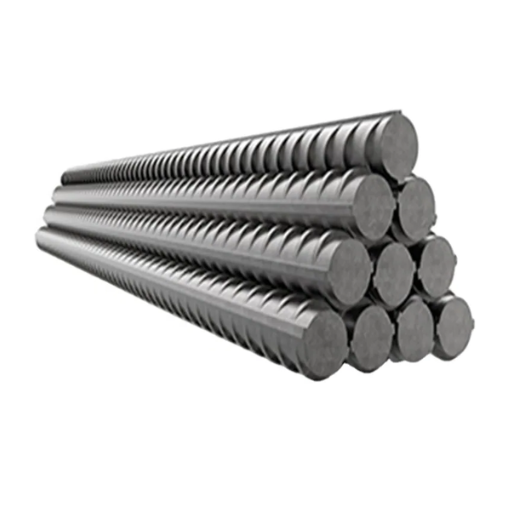
A reinforcing bar adds tensile strength to concrete structures. It fills the gap where concrete’s compressive and tensile strengths differ because concrete is strong in compression but weak in tension. It also helps protect concrete structures from cracking. Hence, having rebars improves the life span of the structures. Reinforced concrete is versatile enough to be utilized in bridges, buildings, and foundations due to the combination of rebar and concrete.
Importance of Reinforcing Bar in Construction
| Key Point | Details |
|---|---|
| Enhances Tensile Strength | Improves concrete’s resistance to pulling forces. |
| Prevents Cracks | Reduces structural cracks and failures. |
| Distributes Loads Evenly | Ensures stability under various load types. |
| Increases Durability | Extends the lifespan of concrete structures. |
| Improves Structural Integrity | Strengthens against environmental and mechanical stresses. |
| Supports Heavy Loads | Essential for high-load applications like bridges. |
| Reduces Maintenance | Minimizes repair needs over time. |
| Provides Earthquake Resistance | Enhances safety in seismic regions. |
| Saves Material Costs | Reduces concrete thickness requirements. |
| Meets Building Codes | Ensures compliance with safety standards. |
How Rebar Enhances Concrete Strength
Reinforcing bars enable concrete to carry tensile loads without failing in tension. This counteracts tensile forces that are applied to a concrete element. Rebars allow the concrete to sustain tensile stresses and improve durability and wear resistance for prolonged periods.
Installation Techniques for Reinforced Concrete Structures
| Technique | Details |
|---|---|
| Reinforced Concrete Jacketing | Adds a concrete layer with steel reinforcement for strength. |
| Steel Jacketing | Steel plates are used to enhance load capacity and durability. |
| Fiber-Reinforced Polymers (FRP) | Wraps columns for improved strength and ductility. |
| Shotcrete Application | Sprays concrete for repairs and retrofitting. |
| New Shear Walls | Adds walls to improve seismic performance and stiffness. |
| Steel Bracing | Installs braces for lateral load resistance and stability. |
| Seismic Isolation | Uses isolators to reduce earthquake forces on structures. |
| Epoxy Injection | Repairs cracks and restores structural integrity. |
| Proper Rebar Placement | Ensures correct positioning for load distribution. |
| Foundation Strengthening | Reinforces footings with jackets or connecting beams. |
Why is Steel Rod Quality Critical in Construction Projects?
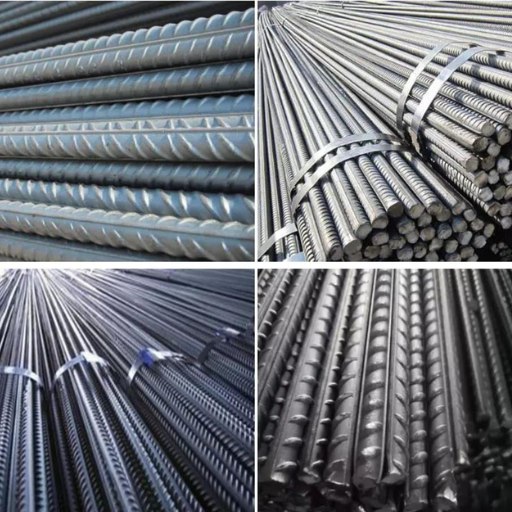
Steel rod quality greatly determines a construction project’s strength, durability, and safety. High-quality steel rods are reliable in providing the needed tensile forces and structural stability and lessening the chance of failure due to environmental factors like corrosion. Trophy rods, which are low-quality steel rods, can lead to unstable casting and pose a safety danger. Repairing such a structure costs a lot while also being a safety hazard. A steel rod purchase for such constructions requires robust and durable steel rods that comply with industry expectations and norms for the best results.
Impact of Steel Rod on Structural Integrity
| Key Point | Details |
|---|---|
| Strength-to-Weight Ratio | High ratio supports heavy loads efficiently. |
| Durability | Resistant to environmental factors, ensuring longevity. |
| Corrosion Resistance | Corrosion reduces load-bearing capacity. |
| Fire Resistance | Non-combustible, enhancing safety. |
| Environmental Impact | Steel production emits high CO2. |
| Design Flexibility | Allows versatile and expandable structures. |
| Maintenance Needs | Corrosion increases repair frequency. |
| Seismic Resistance | Flexible under seismic stress. |
| Adhesion with Concrete | Ribbed design improves concrete bonding. |
| Sustainability | Recyclable, reducing waste. |
Testing Steel Rod Quality for Safety
Assessing the parameters that can impact construction safety and functionality begins with properly testing the quality of steel rods. Steel’s tensile strength, ductility, corrosion resistance, and vital chemical components should be adequately tested to define quality. Given below are the most common approaches to test the quality of steel rods:
- Tensile Strength Test
The tensile strength test defines the maximum application of stress on steel rods without fractures occurring. Structural integrity depends on robust steel rods and accompanying materials as specified while passing tests. Dynamometric testing machines grip samples of steel rods and apply ever-increasing tension until breaking. Subsequently, under the guidelines, for example, of ASTM A615, quality steel rods are expected to surpass 415 MPa of tensile strength.
- Bend and Re-bend Test
This method checks steel rods for maximum bendability without cracking or permanent set. Testing under deformation applies specific angle bends and excessive angle bends with recovery of restoration forces to check for fitting cracks or fractures. Low-cracking flexible rod materials accomplish seismically better performance.
- Corrosion Resistance Test
Rust, along with a plethora of metals such as cadmium, galvanize, copper, bronze, or zinc, can be great for steel rods but simultaneously weaken them with time. Accelerated corrosion does active tests in harsh settings to detect effectiveness against rust and further breaks. Coated or alloyed rods measure up well against environmental corrosion.
- Analysis of The Composition of Chemicals
This step verifies the percentages of the steel rod’s vital components such as carbon, manganese, sulfur, and phosphorus. An example is too much sulfur or phosphorus, which makes steel brittle and prone to failure. X-ray Fluorescence (XRF) or spectrometry techniques commonly help in analysis.
- Ultrasonic Non-destructive Testing (UT)
Ultrasonic testing is a non-destructive and comprehensive technique for assessing internal features of steel rods for inclusions that may affect the structure. Sound waves of high frequency are passed through the substance, and the sensor detects any reflected sound waves from defects.
- Elongation Test
This determines the ductility of steel rods by assessing the maximum extent of stretch without breaking, a crucial property for erecting buildings in earthquake zones.
Data and Quality Standards
ISO 6935-2 and ASTM A706 standards specify the primary criteria for verifying construction-grade steel rods. Some of the parameters are:
- The range for tensile strength is with in the limit of 415-600 Mpa which Is considered acceptable.
- Maintain the Carbon content below the 0.25% level to keep the ductility intact.
- Rod of high standards demonstrates life up to 100 years when tested under normal environmental exposure using accelerated life-cycle corrosion tests.
Integrating scientific methods along with compliance to the relevant industry regulations allows construction teams to verify that the steel rods procured for their projects are safe and will withstand the test of time.
Exploring the Grade of Steel for Construction Applications
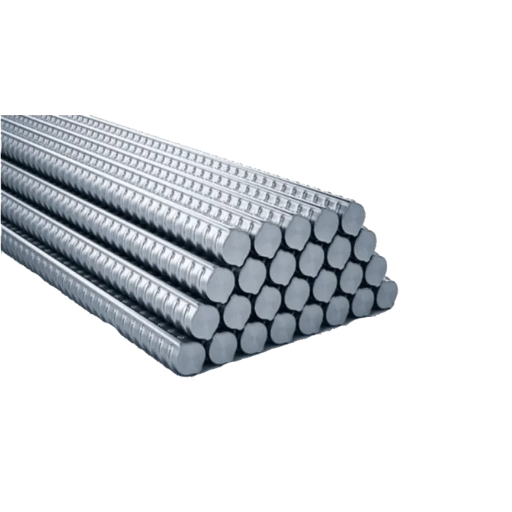
Selecting the steel grade is one of the most important tasks for maintaining the structural soundness and longevity within construction projects. For construction purposes, Grade 60 and Grade 75 are the most frequently used grades because of their strength, ductility, and ability to resist corrosion. These grades follow industry standards such as ASTM and ISO, which ensure that the provided safety and performance checks are adequately met. All of these aspects help simplify the problem of choosing the right steel grade by having a specific set of requirements, like how much load can be withstood, weather conditions, and overall design. By ensuring the correct grade is picked, safety and durability become achievable.
Different Steel Grades and Their Uses
| Steel Grade | Key Characteristics | Common Uses |
|---|---|---|
| Low Carbon Steel | Soft, malleable, easy to weld. | Automotive panels, wire, sheet metal. |
| Medium Carbon Steel | Balanced strength and ductility. | Shafts, gears, railway tracks. |
| High Carbon Steel | Hard, wear-resistant, less ductile. | Cutting tools, springs, high-strength wires. |
| Alloy Steel | Enhanced strength, corrosion resistance. | Structural parts, tools, machinery. |
| Stainless Steel | Corrosion-resistant, durable, hygienic. | Kitchenware, medical devices, pipes. |
| Tool Steel | Heat-resistant, wear-resistant, durable. | Cutting tools, dies, industrial equipment. |
| Austenitic Stainless | Non-magnetic, highly formable. | Kitchenware, chemical tanks, pipes. |
| Ferritic Stainless | Magnetic, corrosion-resistant. | Automotive exhausts, appliances. |
| Martensitic Stainless | Hard, strong, corrosion-resistant. | Knives, surgical tools, turbine blades. |
Comparing Mild Steel and Stainless Steel
| Parameter | Mild Steel | Stainless Steel |
|---|---|---|
| Main Alloying Element | Carbon | Chromium (10.5% or more) |
| Corrosion Resistance | Low, prone to rust | High, resists rust and corrosion |
| Strength | Lower tensile strength | Higher tensile strength |
| Ductility | More ductile, easier to shape | Less ductile |
| Hardness | Softer, less impact-resistant | Harder, more impact-resistant |
| Weldability | Easier to weld | Requires specific techniques |
| Cost | Cheaper | More expensive |
| Appearance | Dull, matte finish | Shiny, polished finish |
| Common Uses | Structural parts, fencing, and automotive panels | Kitchenware, medical tools, marine equipment |
References
- Different Types, Grades and Sizes of Rebar in Construction – Princeton University resource discussing rebar types and applications.
- SB-22 (2472) METAL REINFORCEMENT – A detailed report from Iowa State University on metal reinforcement standards.
- Table-1: Diameter and Area of Reinforcing Bars – A resource from Texas A&M University providing technical data on reinforcing bars.
Frequently Asked Questions (FAQ)
Q: What factors should I consider when choosing the right steel bar for construction?
A: When choosing the right steel bar for construction, consider factors such as the type of project, load requirements, environmental conditions, and compatibility with other materials. The strength of the steel and its corrosion resistance are also important considerations.
Q: What are the common types of steel bars used in construction?
A: Common steel bars used in construction include mild, deformed, and TMT bars. These bars are commonly used for their strength and flexibility, each serving different purposes in reinforced concrete structures and general construction.
Q: Why are TMT bars often used in the construction industry?
A: TMT bars are often used in the construction industry due to their high strength, ductility, and corrosion resistance. These properties make them ideal for reinforced concrete structures, providing durability and stability.
Q: How does carbon steel compare to stainless steel bars for construction purposes?
A: Carbon steel is widely used in construction for its strength and affordability, while stainless steel bars offer superior corrosion resistance and are used in environments prone to moisture or chemical exposure. The choice depends on specific project requirements and environmental conditions.
Q: What are the advantages of using deformed bars in concrete construction?
A: Deformed bars offer better bonding with concrete due to their surface ridges, which enhance the grip and reduce slippage. This makes them ideal for reinforced concrete structures, providing additional strength and stability.
Q: Are cold-rolled steel bars suitable for all types of construction projects?
A: Cold-rolled steel bars suit projects requiring precision and smooth surface finishes. However, due to their lower flexibility compared to hot-rolled bars, they may not be ideal for high-stress applications. They are often used in specific architectural elements or detailed work.
Q: What role do mild steel bars play in construction?
A: Mild steel bars are commonly used in construction because they are easy to weld and flexible. They are suitable for general construction projects where high tensile strength is not critical, making them a cost-effective option for many applications.
Q: How do various grades of steel reinforcement affect construction projects?
A: Various grades of steel reinforcement affect construction projects by determining the load-bearing capacity and durability of the structures. Different grades offer varying levels of strength, ductility, and resistance to environmental factors, allowing for tailored solutions to specific project needs.
Q: Can round bars be used in reinforced concrete structures?
A: Round bars can be used in reinforced concrete structures, but are more commonly used for non-structural applications or decorative elements. Deformed bars are preferred for structural reinforcement due to their enhanced bonding capabilities with concrete.
Q: What is the significance of choosing the best steel rods for construction?
A: Choosing the best steel rods for construction is crucial for ensuring a structure’s longevity, safety, and stability. The right selection impacts the structural integrity, resistance to environmental stresses, and overall construction project performance.

